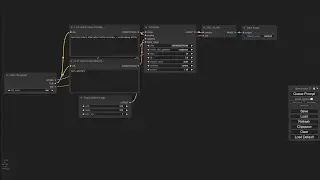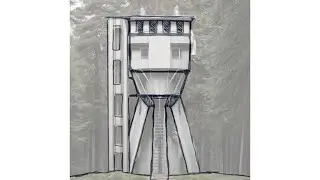Tutorial – How to stitch Grasshopper animation frames into a video with FFmpeg
Timestamps:
0:00 [Intro] Introduction to tutorial
0:12 [FFmpeg] Downloading FFmpeg
0:36 [FFmpeg] Place the extracted contents in a suitable directory
0:46 [VLC] Downloading VLC to ensure proper playback of the stitched animation
1:02 [Grasshopper] Animating a slider value
2:35 [PowerShell] Starting a PowerShell window in the frame directory
2:57 [FFmpeg] Explanation of the arguments of the command
4:44 [FFmpeg] Running the command
5:02 [VLC] Playing the stitched animation
.........................................
Links to free software:
https://www.ffmpeg.org/
https://www.gyan.dev/ffmpeg/builds/
https://www.videolan.org/
.........................................
PowerShell command (make sure to change the command so that the first part reflects where you personally have FFmpeg installed):
D:\FFmpeg\ffmpeg-2023-05-18-git-01d9a84ef5-full_build\bin\ffmpeg.exe -f image2 -framerate 24 -i Frame_%05d.png -r 24 Animation.mp4
.........................................
This tutorial demonstrates to KTH Architecture students how to stitch individual Grasshopper animation frames into a video with FFmpeg, ready for smooth playback with VLC Media Player.
The operating system used for this tutorial is Windows 10. Running another operating system (e.g. Linux, MacOS) might amount to a different user experience or software incompatibility.
If you want to check in which computer room(s) any relevant software might be installed in – CADLAB, DFL, and ARCPLAN are in the KTH School of Architecture building – please check the following link for current status:
https://www.kth.se/en/student/it/camp...
Disclaimer:
This tutorial aims to increase student awareness of the versatility of the digital tools available for use within the context of the architectural education offered by KTH. As such, it might not be generally applicable, but on the other hand, if at least one architecture student is helped by it in fulfilling deliverables requirements, the purpose of this tutorial is satisfactorily achieved. There might be inaccuracies in this tutorial video – if you identify any significant one, please tell us in the comments.











![Tutorial – How to find the best free Digital Elevation Model for use in QGIS as a heightmap [GLO-30]](https://images.videosashka.com/watch/nHV8sW2BUhQ)







